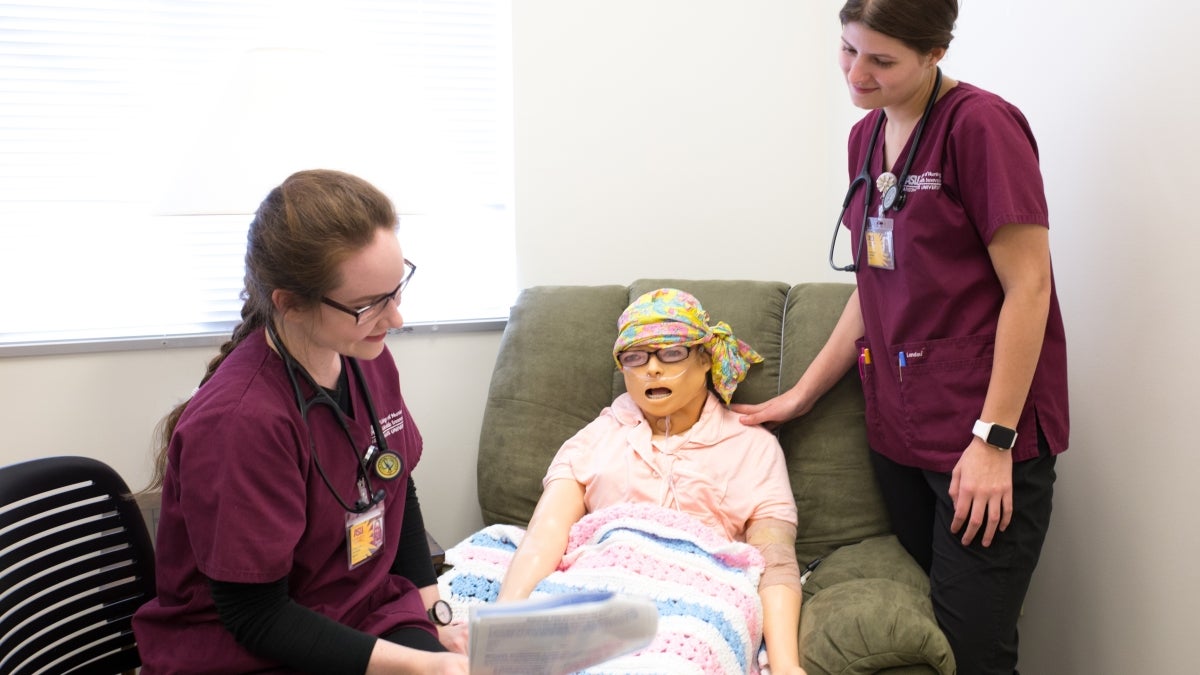Simulated clinical experiences: Creating better nurses

Simulations ensure a wide range of valuable experiential learning opportunities for students.
Imagine facing an illness or injury and being unsure of your diagnosis, what treatment you might need, and what type of care you will receive. It’s a scary thought, yet this happens to be a reality for millions of people on a daily basis. ASU’s College of Nursing and Health Innovation is committed to ensuring every nursing student who graduates from our program will be equipped to provide the very best care for the unique needs of every patient.
One of the most critical components of student preparation comes in the form of simulated clinical experiences. Simulations ensure a wide range of valuable experiential learning opportunities that simply cannot be guaranteed by working only in provider settings. Students interact with high-fidelity mannequins and even highly trained live actors playing the role of a patient. The simulation experience teaches students to make assessments, exercise clinical decision-making skills, and provide interventions for an extremely broad set of conditions.
But it took a pioneer of innovative nursing education to make ASU an early adopter of this new technology more than a decade ago.
Professor Beatrice “Bunny” Kastenbaum, a nurse educator for more than 40 years, including over thirty here at the College of Nursing and Health Innovation, had a vision for creating a safe learning environment for students, a place where they felt comfortable making mistakes. Professor Kastenbaum, a creative educator and generous mentor, successfully realized her vision and helped spearhead the college's development and implementation of simulation and other technologies as tools to educate nursing students.

As Margaret Calacci, director of simulation and learning resources (SLR) put it, Kastenbaum was instrumental in shifting the culture within the college and ensuring students benefited from this novel approach to nursing education.
“The college and its nursing programs are better because of her work,” said Calacci. “Without her creativity, passion, persistence and vision, the college would not be recognized as a national leader in the use of simulation in nursing education; and many students would not have benefitted from the inclusion of simulation in their nursing education.
Now, years later, SLR’s Simulation Lab remains a premier learning laboratory on ASU’s Downtown Phoenix campus. Most recently, the Simulation Lab underwent a 20,000 square foot expansion that more than doubled the size of the facility, a milestone that was featured on Channel 3 News.

And this spring, as Kastenbaum prepares to enter retirement, she can feel confident in knowing that her leadership and dedication to nursing education has helped pave the way for SLR’s continued growth, as well as its educational impact in the lives of thousands of students.
As a sign of appreciation for Kastenbaum’s countless contributions to SLR and the college overall, colleagues and former students have established the Beatrice “Bunny” Kastenbaum Scholarship, which will provide support for nurse educators as they pursue experiential learning opportunities.